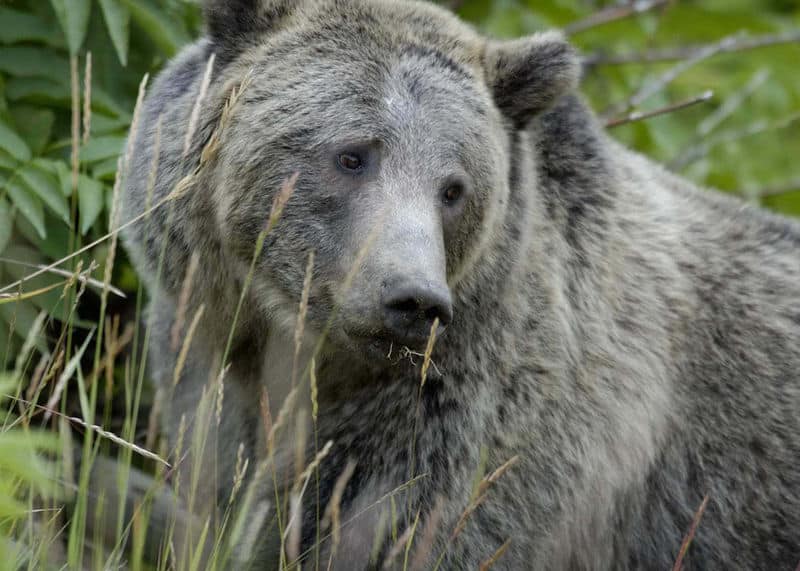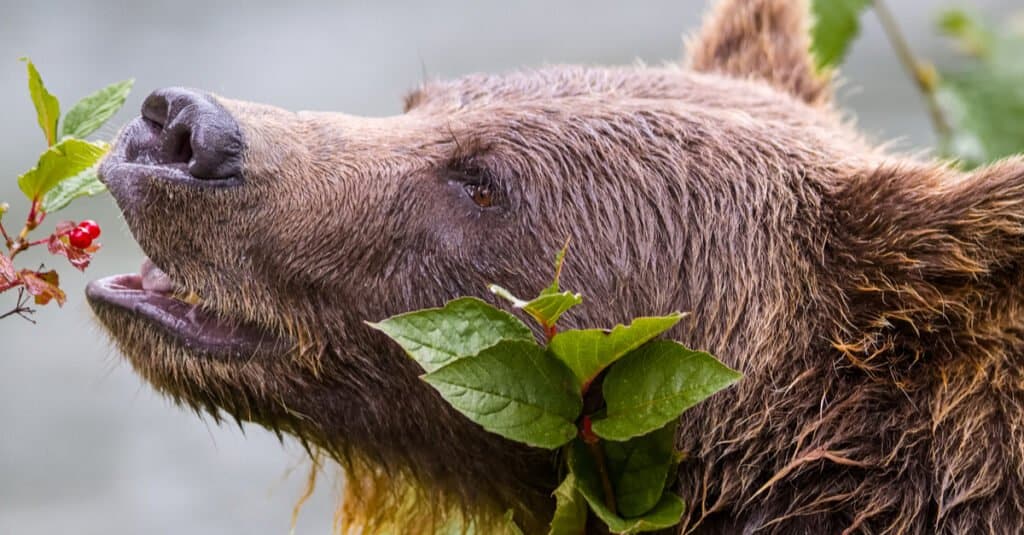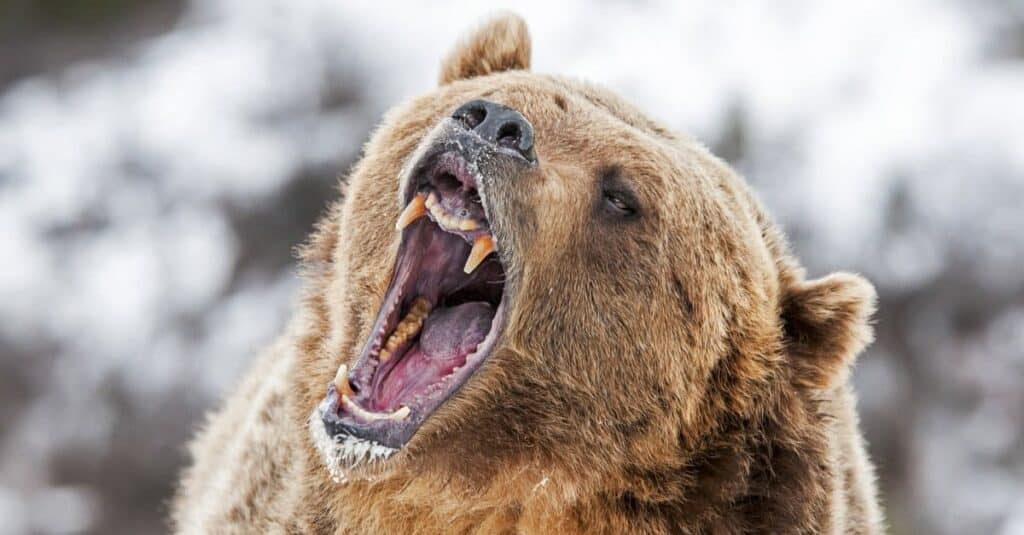
Grizzly bears once roamed all of Colorado but the last confirmed grizzly in the area died in 1979.
©John Good – Public Domain
There are about 55,000 grizzly bears left in the world. Less than 2,000 of those are found in the lower 48 states of the United States. It hasn’t always been like that, however. In fact, grizzly bears used to be a common occurrence in the western United States, even in Colorado. That was, before 1979.
Interested in discovering the true story of Colorado’s last ever grizzly bear? Keep reading!
The History of Grizzly Bears in Colorado

Grizzly bears are considered
apex predators
.
©Terry Tollefsbol – Public Domain
While the last confirmed grizzly bear in Colorado died in 1979, their presence – or lack thereof – actually goes back much further.
You see, grizzly bears were actually considered extirpated in Colorado in 1951. This means that they were extinct in this area, although they could be found elsewhere. The occasional grizzly bear could, of course, still wander into the area, especially given the habitat that the Rocky Mountains offered, but even that would be rare.
But where did all the grizzly bears in Colorado go?
Just like the wolves of Yellowstone, grizzly bears were considered a threat to human lives in Colorado and the surrounding areas. They made it dangerous for livestock, and hunters worried they would reduce the local prey too much. As a result, hunting grizzly bears became common. Eventually, the population dropped so much that it was no longer able to thrive, and the grizzly bear disappeared from the Colorado wilderness.
That is, until 1979.
The True Story of Colorado’s Last Ever Grizzly Bear

Grizzly bears are more aggressive than their small cousins,
black bears
.
©Martin Rudlof Photography/Shutterstock.com
The story of Colorado’s last ever grizzly bear is one so suspenseful it seems more fit for the movies than real life. However, for Ed Wiseman, this frightening event was reality.
This story begins in 1979. Sept. 23, 1979, to be exact – the last day of bow hunting season for elk. On this day, Ed Wiseman was leading a group of hunters near Pagosa Springs, a small town set in the San Juan Mountains. By this time, Wiseman had split up from the hunter he was guiding to try and get the elk to move. His hope was that, by doing so, the elk would move into the right position for a hunt, hopefully ensuring a successful end to the season.
The Attack
The next monumental moments were quick, an almost instantaneous change of events. You see, one second, Ed Wiseman was there, trying to decide whether or not he would try his luck at hunting for elk. The next, a grizzly bear appeared just feet away from him. The only warning was a slight noise from the brush, and the grizzly bear had emerged, growling, almost immediately.
When understanding the gravity of the situation, it’s important to understand the exact environment that Ed Wiseman was in that day. The San Juan Mountains are known for their rugged paths, and the particular area that he was in that day had sharp cliffs and slopes that made movement difficult.
For any other person, this may have been a fatal encounter. Thankfully, however, Ed Wiseman’s career had exposed him to hundreds, if not thousands, of black bears. As a result, he was quickly able to identify the grizzly bear and act accordingly.
In a 2019 interview, Wiseman says it’s a “freak of nature that [he] was able to survive”.
At first, he attempted a peaceful response by laying down and pretending to be dead. However, the grizzly bear continued her attack, injuring Ed Wiseman in the process. It was then he realized that he needed to try a different method of scaring her away.
Prior to the bear’s attack, Wiseman had his own bow. Then, when she first attacked him, his bow was lost in the process, and his arrows scattered. One, however, had landed close enough for Wiseman to reach it. He used the arrow to defend himself, and, although his intention had only been to scare the bear away, she died soon after from her injuries.
The Aftermath
Although Ed Wiseman managed to survive the initial bear attack, he wasn’t in the clear yet. He had suffered over 80 different wounds, and he was alone in a remote location in the middle of the wilderness. Fortunately, the hunter he had accompanied to the location was close enough that he heard Ed Wiseman’s calls.
Unfortunately, however, there was no way for the hunter, Mike Niederee, to get Ed Wiseman help right then. Instead, he had to build Wiseman a camp and leave to get help. This is because only a helicopter would be able to reach that location. Wiseman had to survive through the night. When help finally arrived, he spent over a month in the hospital to recover.
Grizzly Bears in Colorado Today

Grizzly bears feast on everything from
salmon
and trout to large animals such as moose and elk – many of which are found in Colorado.
©Scott E Read/Shutterstock.com
The grizzly bear that attacked Ed Wiseman was the first to be seen in Colorado in around three decades. There hasn’t been another since. For weeks following the attack, scientists tried to discover whether there were any males around to accompany the female. They also looked for cubs. However, even with every stone turned, there were no others to be found.
As a result, the grizzly bear is considered extinct in Colorado, nearly fifty years after Ed Wiseman’s attack.
The photo featured at the top of this post is © iStock.com/Jess Bray
Thank you for reading! Have some feedback for us? Contact the AZ Animals editorial team.






